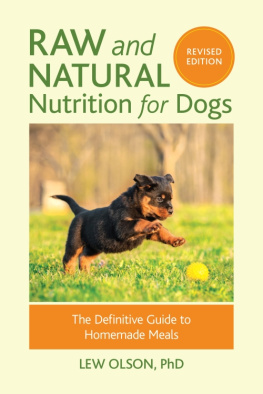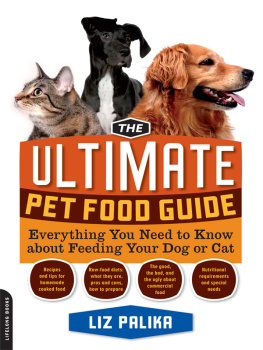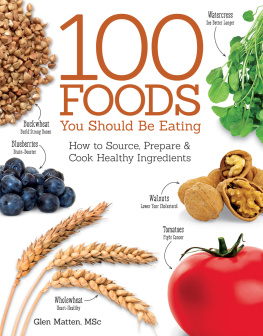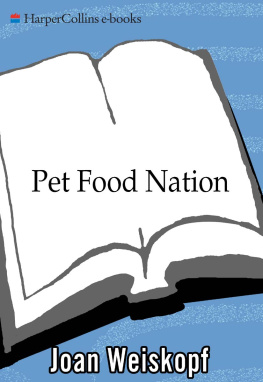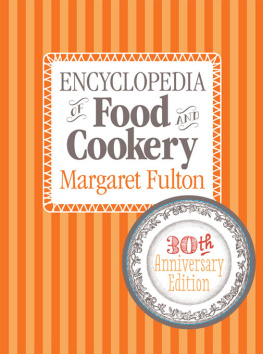Praise for Feed Your Pet Right
Feed Your Pet Right is frank and fascinating, with abundant information that can be readily absorbed. It will make you an expert not only on the quality and contents of the canned foods and kibbles, but also on the doings of the manufacturers. You will realize how little you knew after you have read this splendid, highly scientific, star-quality book.
Elizabeth Marshall Thomas, author of
The Hidden Life of Dogs and The Social Lives of Dogs
One of the enduring topics of conversation among pet owners is what to feed our animals. Everybody has a strongly held opinion, but few have facts to back them. Feed Your Pet Right has those facts and gives them to you in a highly readable, fascinating, and entertaining way. You can find out what is really in commercial pet foods and how healthy they are, the truth about diets based on raw food, vegetarian only, and home-cooked foods and even look at the ethics of pet foods. This is a must read for every dog and cat owner.
Stanley Coren, author of The Modern Dog,
The Intelligence of Dogs, and others
This book is now the definitive work on what to feed pets. It is well researched and well written by two highly qualified, unbiased scientists who provide fascinating information putting many of the way-too-many pet food myths to rest. No longer will pet owners have to rely simply on what their breeder (or the person next door) saysinstead they can just consult this book. I learned a lot from it and will use it as one of my bibles. Talk about food for thought! Two paws up!
Nicholas H. Dodman, DVM and author of
The Well-Adjusted Dog and The Dog Who Loved Too Much
Feed Your Pet Right is mind-blowingly excellent!! It is brilliant in every waycomprehensive in scope and clearly impartial. The style of writing is accessible to any reader.
David Fraser, Emeritus Professor of Animal Science,
University of Sydney
FEED YOUR PET RIGHT
The Authoritative Guide to Feeding Your Dog and Cat
MARION NESTLE AND MALDEN C. NESHEIM


Free Press
A Division of Simon & Schuster, Inc.
1230 Avenue of the Americas
New York, NY 10020
www.simonandschuster
Copyright 2010 by Marion Nestle and Malden C. Nesheim
All rights reserved, including the right to reproduce this book or portions thereof in any form whatsoever. For information address Free Press Subsidiary Rights Department, 1230 Avenue of the Americas, New York, NY 10020
First Free Press trade paperback edition May 2010
FREE PRESS and colophon are trademarks of Simon & Schuster, Inc.
For information about special discounts for bulk purchases, please contact Simon & Schuster Special Sales at 1-866-506-1949 or business@simonandschuster.com.
The Simon & Schuster Speakers Bureau can bring authors to your live event. For more information or to book an event contact the Simon & Schuster Speakers Bureau at 1-866-248-3049 or visit our website at www.simonspeakers.com.
Designed by Katy Riegel
Manufactured in the United States of America
10 9 8 7 6 5 4 3 2 1
Library of Congress Cataloging-in-Publication Data
Nestle, Marion.
Feed your pet right: the authoritative guide to feeding your dog and cat / Marion Nestle and Malden C. Nesheim.
p. cm.
Includes bibliographical references and index. 1. DogsFood. 2. CatsFood. 3. DogsNutrition. 4. CatsNutrition. I. Nesheim, Malden C. II. Title.
SF427.4.N47 2010
636.7084-dc22
2009031301
ISBN 978-1-4391-6642-0
ISBN 978-1-4391-6644-4 (ebook)
Contents
Feed Your Pet right
1
Introduction
THIS BOOK is about what dogs and cats eatand should eatto keep them at peak health for as long as they live. It is also about the food products available for feeding companion animals, the ingredients in those foods, the sources of those ingredients, the industry that makes the products, and what is and is not known about the best ways to feed these animals. In this book, we provide dog and cat owners with the information they need to know about what their pets eat and why.
We are professors in the human nutrition departments at New York University (Marion Nestle) and Cornell University (Malden Nesheim). Both of us have had long careers in human nutrition and Malden Nesheim received much of his early training and experience in animal nutrition. But how we came to write a book about pet food and feeding is a story best told by Marion Nestle because Feed Your Pet Right evolved from What to Eat, a book she wrote in 2006 about food for people. What to Eat is not really a how-to book; it is a book about how to think about what to eat. Similarly, FeedYour Pet Right is about how to decide for yourself whats best for your pet to eat and how to feel more confident about your choices.
MARION NESTLE EXPLAINS
For much of 2005 and 2006, I was spending every minute I could in supermarkets researching the topics I wrote about in What to Eat. That book, which started out as a guide to supermarkets, ended up as a reference work on the enormous range of issuesfrom basic nutrition to international politicsthat confront anyone faced with food choices these days. As I wandered through supermarket aisles, I kept running across pet foods. In some stores, they occupied entire aisles, six shelves high. By the time I began paying attention to these products in a more serious way, I knew that food companies paid slotting fees (bribes, for all practical purposes) to many supermarkets for every inch of prime retail shelf space. It seemed obvious that pet foods must be a lively and profitable business for all concerned.
When I looked at the cans, pouches, and bags on those shelves, I was surprised by their labels. The Food and Drug Administration (FDA) has strict rules for what can and cannot go on the labels of foods for humans, but for historical reasons (which we explain later on) it regulates pet foods in an entirely different manneras animal feed. The FDA requires the labels on feed for farm animals to list ingredients, but does not officially permit statements about benefits for special health conditions. Yet here were foods marketed for dogs and cats bearing claims that ingredients in the products could help reduce the risk of heart disease or diabetes, stimulate immune function, treat skin or joint disorders, or alleviate the infirmities of aging. The shelves were full of products advertised for dogs of different sizes and breeds, for puppies and kittens, for cats kept indoors, and for those fed vegetarian or all-meat diets.
But my initial look at the ingredient lists gave an entirely different impression: the products seemed much alike. Could it be possible that foods advertised for specific ages, breeds, lifestyles, and health conditions all contained virtually identical ingredients? If distinctions existed, they were not obvious at first glance. I also wondered about the health claims. Health claims on human foods are well known to confuse and
If for no other reason than to satisfy curiosity, I thought it would be a good idea to add a chapter to What to Eat about pet food choices. But by that time, the manuscript had expanded to more than six hundred pages and I was eager (desperate is more like it) to bring it to a close. Even though I suspected that pet owners were just as curious as I was, and just as interested in reliable information about what to feed their cats and dogs, I reluctantly abandoned the idea of including that chapter.
Next page

